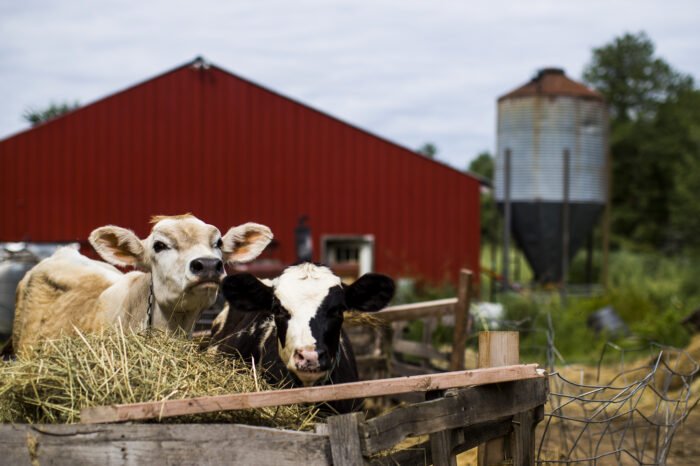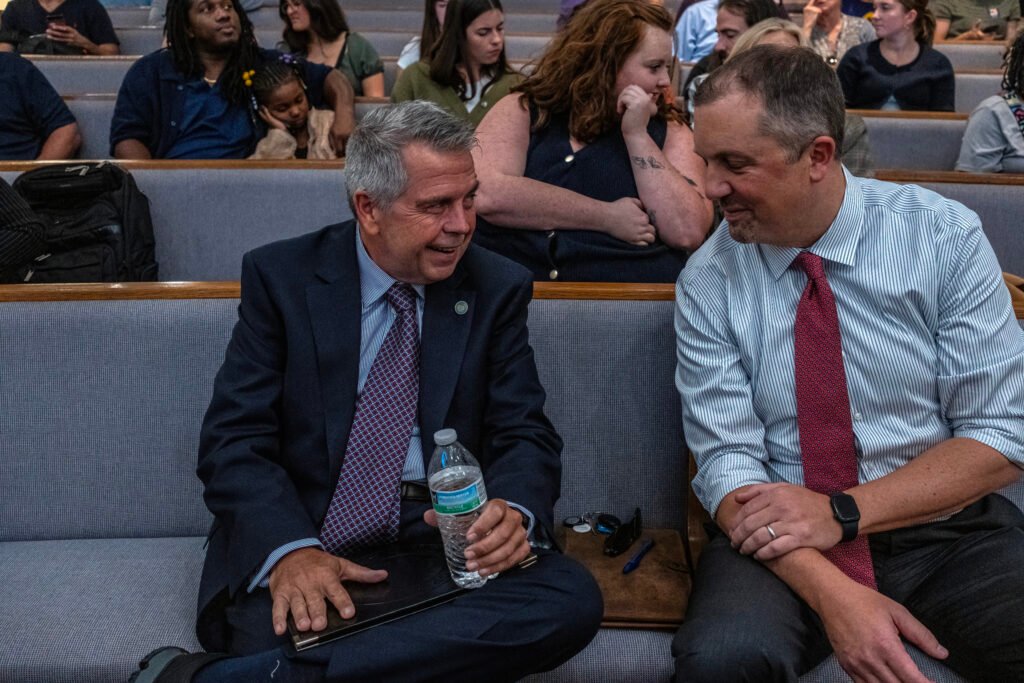Jack Daniels has wrapped up its cattle feeder program, which has been active for decades. This initiative allowed local farmers to access corn byproducts from distillation processes at little to no cost, helping them keep cattle feeding expenses low.
The “Cow Feeder Program” will conclude on March 31, transitioning to a partnership with Ohio’s Three Rivers Energy, which focuses on converting waste into renewable fuels and fertilizers.
This shift is prompting farmers in and around Moore County to seek alternative methods to maintain their cattle farming livelihoods. Livestock constitutes a significant portion—89%—of Moore County’s farm income, according to the latest USDA Agricultural Census.
Danny Anderson, a 56-year-old cow farmer, noted that his family has relied on Jack Daniels’ byproducts, referred to as “slop,” for many years. This mixture is primarily water combined with leftover grains.
“I remember going to get it with my grandfather when I was just a kid,” Anderson shared. Taking over the family’s 207-acre operation, he initially used a 1,000-gallon tank for feed and later upgraded to a 4,000-gallon tank, managing to pay less than $9 per load.
Working alongside other farmers, he has maintained a herd of about 130 cows, supplementing the slop with hay, salt, and minerals. “It’s incredible to feed 200 to 250 cows for just $8 a day. Nothing compares,” he remarked.
Yet, with the program’s termination, Anderson faces challenges as he will no longer be able to subsidize feeding cattle for his partners. “It’s just not feasible,” he said, explaining that he currently utilizes around 185,000 gallons of slop monthly, which will drastically drop to 144,000 gallons in October and then to 43,200 gallons in January before it ends entirely.
“I think Jack Daniels of Little Old Lynchburg is getting a bad rap for this because the folks at Jack Daniels had to inform the farmers themselves.”
– Danny Anderson, Moore County Farmer
Anderson has already sold off 50 cows and plans to maintain a smaller herd of 50 by relying on grass, hay, and occasional feed mixes during winter. He mentioned that the hilly terrain in Moore County is mainly suitable for cattle, making it harder to pivot to other agricultural activities.
“With slop, you could utilize less fertile land effectively and still turn a profit,” he commented.
Jack Daniels’ forthcoming partnership with Three Rivers Energy will require them to supply 350,000 to 500,000 gallons of used grains daily for energy production.
A representative from Jack Daniels stated that the decision to end the program had been communicated back in March 2022. They emphasized that the relationship with Three Rivers would adhere to essential environmental standards and support the brand’s growth.
Anderson noted that the initiative’s cessation was determined by Jack Daniel’s parent company, Brown Forman. “I think Jack Daniels is facing undue criticism because they had to be the bearers of bad news,” he mentioned.
What’s Next?
The University of Tennessee’s Agricultural Research Institute recently held a meeting to discuss future options for farmers who relied on “slops” for feed. According to Livestock Marketing Specialist Andrew Griffith, not every cattle farmer in Moore County depended on slop, but a significant number did.
In the immediate future, Griffith suggested that feed from commercial producers might be the best alternative for farmers, allowing for minimal initial investments while adapting to the changes.
Farmers could also keep supplying hay or even develop their own feeds using available crop resources like corn and soybean meal. Evaluating cattle farming’s viability hinges on “cost of benefits,” which refers to feed costs relative to the weight gained by the animals. Although the specifics concerning sourcing slop can complicate these calculations, it’s expected that other feed alternatives will be pricier than the previously free byproducts.
“This situation highlights the necessity of flexibility in agriculture,” Griffith stressed. “Things can shift unexpectedly. If we’re unable to adapt, we risk falling behind. Certainly, some may not want to adjust. But if farming is your livelihood, you really have to be open to change.”
Broad Impacts
Anderson expressed concern that the end of this program could affect the local agriculture economy broadly. With potential declines in livestock numbers, local sales barns might see decreased activity. He is thinking about reducing certain insurance policies as well as other costs tied to equipment that may soon go unused.
Even with strong beef demand, the USDA noted a slight 1% decrease in cattle and calves available for slaughter in the U.S. Secretary of Agriculture Brook Rollins mentioned efforts to fortify the national beef herd, which is in a critically low state not seen since 1951, although these plans do not offer direct payments to beef producers.
Griffith pointed out that despite lower total herd numbers, current agriculture practices yield more beef per cow compared to a decade ago. “We’ve adapted our breeds and methods, so while prices are high due to inventory shortages, we’re producing more efficiently,” he concluded.







